INTRODUCTION
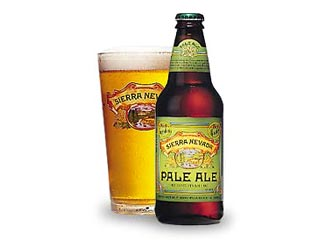 |
| Sierre Nevada Pale Ale |
|
|
Brewing has existed in it's familiar form for centuries, if not millenia. The process may have been refined over the years but the basic prinicipal remains the same, which is the conversion of starches to sugars via the "mashing" process and then fermenting the result with yeast. Though the process itself remains largely unchanged, the differing results obtained are evident around the world. The variety can be seen in the American Pale Ales such as Sierra
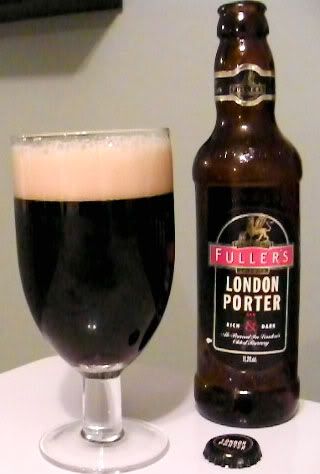 |
| Fuller's London Porter |
Nevada, whose characters are defined by fragrant, citrusy hops, and the coal black porters and stouts like Fuller's London Porter, which take their colouration from longer roasted, dark malts. There are a few brewing rules which should generally beadhered to, such as the need for thorough sanitisaton, and the temperatures of the mash and boil, but much of the rest can be changed to entirely alter the character of a beer. The more recent trend, seen particularly in the US, is toward "extreme brewing", where the accepted traditions of brewing are taken to, well, extremes - addition of fruit, chocolate, honey, spices, herbs and pretty much anything else that would be considered remotely possible!
INGREDIENTS
Water
It will come as no surprise that the main constituent of beer is water. The volume used is, of course, directly attributable to the volume of beer required at the end. Brewers use the term "Liquor" for water that is to be used in the brewing process. The water that comes out of your tap from the mains can be used as is, but generally speaking the water should be treated to remove chloramines that can make brewed beer taste bad.
Grains
 |
| Malt Mill |
Grains play a number of roles in the brewing process. First and foremost the main constituent is a pale malt (barley that has been roasted), which provides the lion's share of the starches to be converted to sugar during the mash. A popular pale malt used in the UK is "Maris Otter". The grain must be crushed to make the starch more readily available for the mashing process, and grains purchased from the home brew shop can be bought crushed or whole. Many home brewers buy malt pre-crushed, but some do crush their own with malt mills. Other grains, so called "speciality" grains or adjuncts, are added to the mash but they do little to add to the starch content and are primarily for colouration, texture, and in some cases flavouring. Certain grains will also contribute to the clarity of the beer, or rather the lack thereof, in beers such as witbeers. The amount of grain used, in comparison to the volume of liquor, contributes directly to the strength of the resultant brew. A larger volume of primary grain will
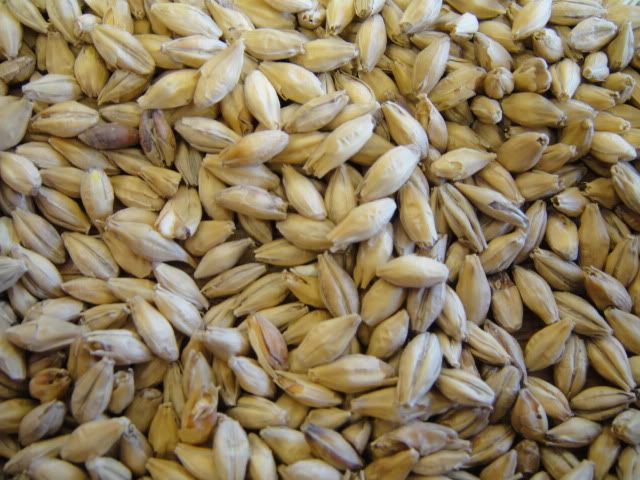 |
| Maris Otter pale malt |
provide a higher volume of fermentable sugars, so increasing the amount turned to alcohol by the yeast during fermentation. In brewing parlance, the list of grains to be used in the recipe is called the "grain bill". Typical grain bills contain 70-80% pale malt, or base malt, and the rest speciality grains and adjuncts.
Hops
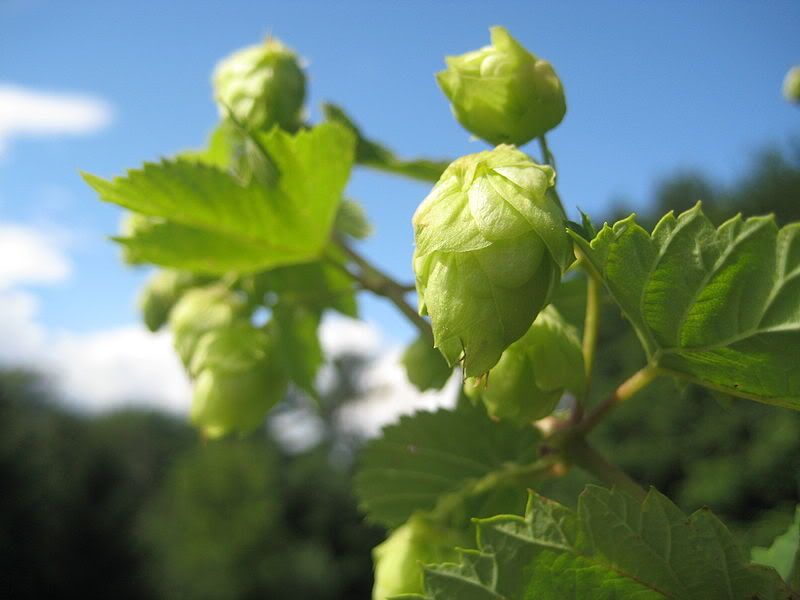 |
| Cascade hops |
Beers gain their bitterness, flavour and aroma from hops. There are many varieties of hop which will all add differing degrees of bitterness and aroma to a beer depending on what they are, and when they are added to the boiling wort. Bittering hops, such as Northern Brewer or Target, are used to impart the bitterness to a brew, as the name suggests. A brew gains it bitternes over a longer duration of the boil but aroma and flavouring are removed by enzyme action over longer boils, so hops used for this purpose are added later on. Without going into too much detail, much of which I have some trouble staying awake for myself, the "Alpha Acid" content of a hop determines how bitter the brew is, along with how early on in the brew these hops are added and of course the quantity used. Some hops can be bittering, flavouring
and aroma hops. Cascade is a prime example, which has produced a wonderful hoppy american style pale ale for me, being the only hop used for all three qualities, in varying quantities, from a fairly modest 13g at the start of the boil to a more generous 50g at the end.
Yeast
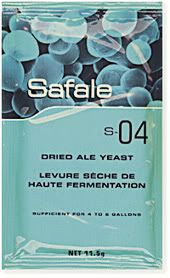 |
| Safale S-04 ale yeast |
The strain of yeast used in a brew can make a substantial difference to the outcome. The one I use much of the time is the Safale S-04 which is a stalwart for British ales, but to emulate a brew you have tried and would like to clone, often a particular strain of yeast may be called for. Whatever yeast is used, they propogate in much the same way, in that they convert the sugars to alcohol, multiplying in the process. Some are top fermenters, which ferment at the top of the vessel. Bottom fermenters do the opposite. These are often lager yeasts, which ferment at the much lower temperatures as required by lagers (as low as 13 'C, as opposed to 20'C preferred by top fermenting ale yeasts). Yeast from some commercial bottled beers can be collected and used in the home brewer's own brews, which can come in particularly handy when attempting to clone said beer. The process is fairly straight forward and is detailed in
this post on "The Home Brew Forum" - which I should add add at this point has been invaluable to me in my home brewing learning curve! Head there now, sign up, and gain access to a wealth of information and advice:
If, like me, you do find the site invaluable and you would like to give something back, the means to do so is available through their membership options.
Other Additions
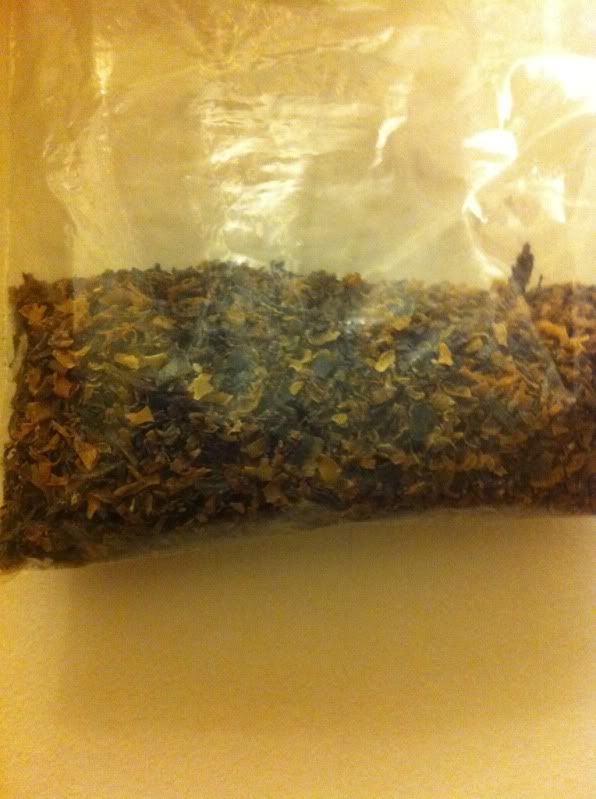 |
| De-hydrated Irish Moss |
Anything that doesn't contribute directly to the brewing process comes into this category. Such additions would be multo-dextrin, which adds body to a beer, and is incidentally used in body building products. Irish Moss is another, which is added to the boil towards the end and interacts with proteins that would otherwise cause cloudy beer and causes it to dissipate or fall to the bottom of the boiler. There are other products that can be used during fermentation to clarify a beer, known as finings, which contain substances such as gelatin that will drag the cloud-causing material to the bottom of the fermenter faster than leaving it to gravity. Water treatments also apply, such as Campden tablets, which are added to clear the liquor of chloramines before it is used for brewing as mentioned earlier.







